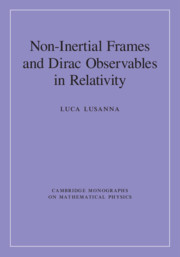
- Cited by 4
-
Cited byCrossref Citations
This Book has been cited by the following publications. This list is generated based on data provided by Crossref.
Chataignier, Leonardo 2020. Construction of quantum Dirac observables and the emergence of WKB time. Physical Review D, Vol. 101, Issue. 8,
Brown, J. David 2022. Singular Lagrangians, Constrained Hamiltonian Systems and Gauge Invariance: An Example of the Dirac–Bergmann Algorithm. Universe, Vol. 8, Issue. 3, p. 171.
Chataignier, Leonardo 2022. Timeless Quantum Mechanics and the Early Universe. p. 185.
Chataignier, Leonardo 2022. Timeless Quantum Mechanics and the Early Universe. p. 19.
- Publisher:
- Cambridge University Press
- Online publication date:
- June 2019
- Print publication year:
- 2019
- Online ISBN:
- 9781108691239


